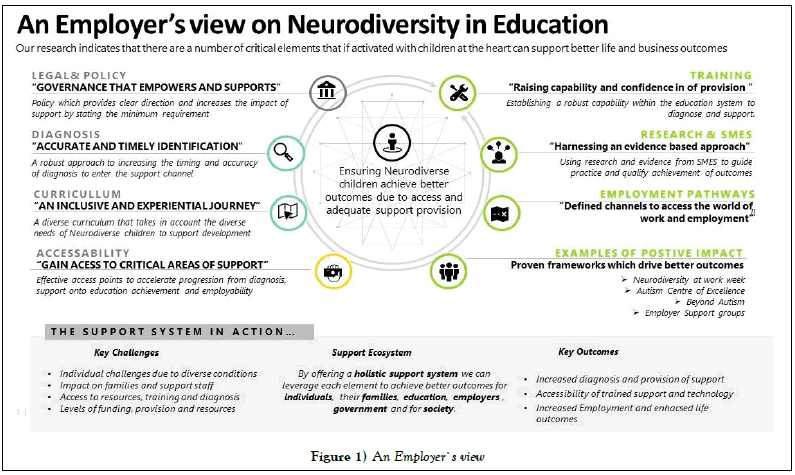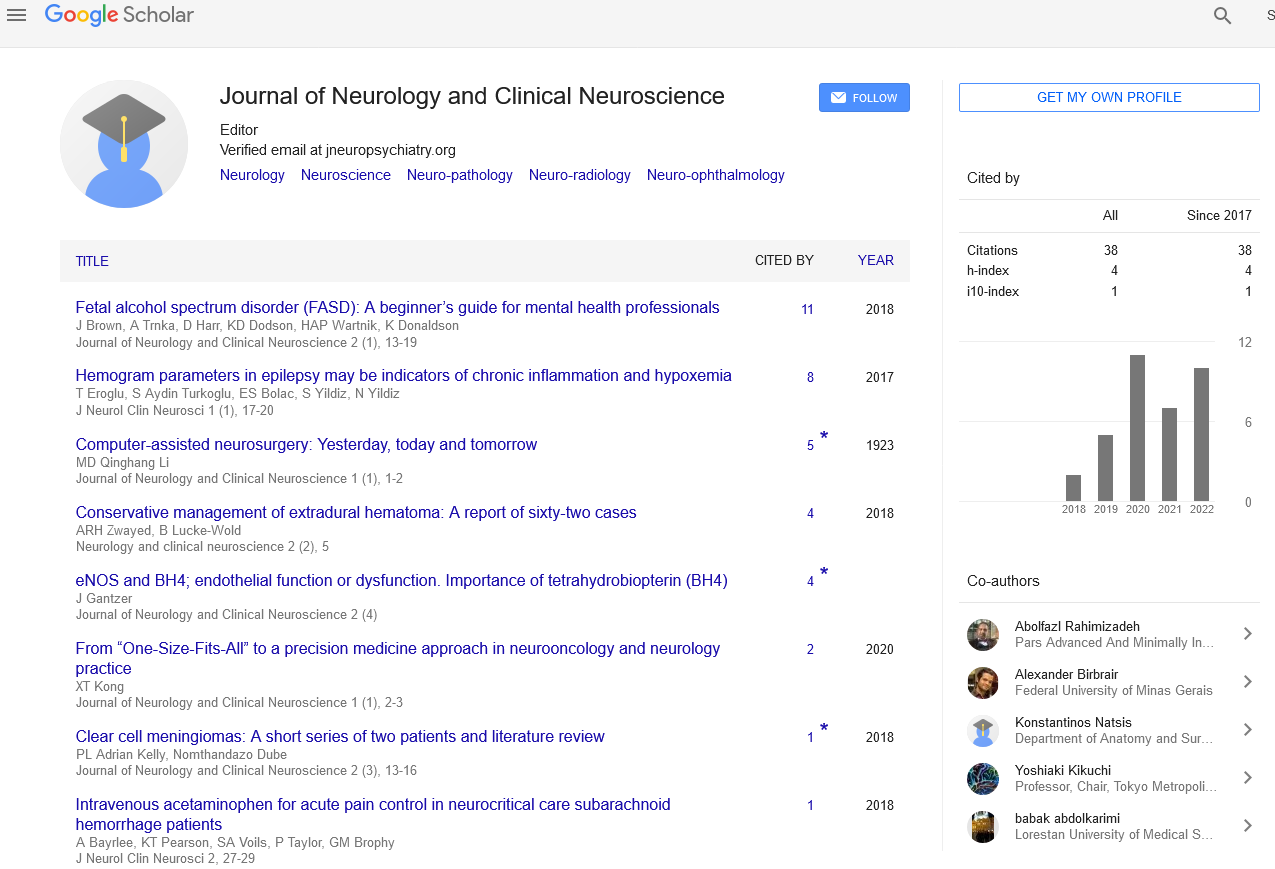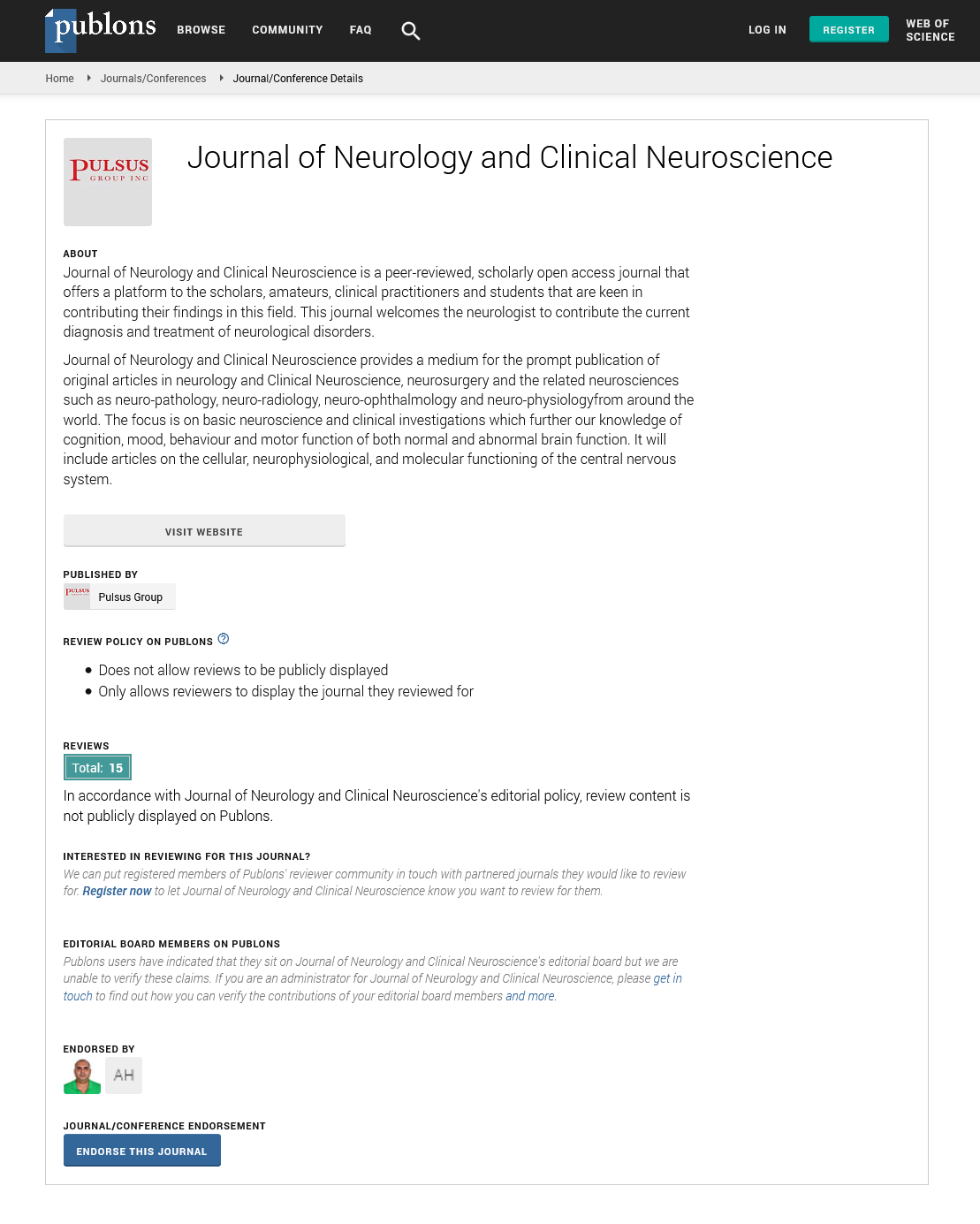neurodiversity in education the employer view
2 Independent NED ‘to be’, Self-employed, University of Oxford, London, United Kingdom
Received: 20-Sep-2021 Accepted Date: Oct 04, 2021; Published: 11-Oct-2021
Citation: Harris D,George OBE R,Friel A. Neurodiversity in education: The employer view. J Neurol Clin Neurosci. 2021 5(5):1-2.
This open-access article is distributed under the terms of the Creative Commons Attribution Non-Commercial License (CC BY-NC) (http://creativecommons.org/licenses/by-nc/4.0/), which permits reuse, distribution and reproduction of the article, provided that the original work is properly cited and the reuse is restricted to noncommercial purposes. For commercial reuse, contact reprints@pulsus.com
Description
Building workplaces and communities that are more inclusive of Neurodiversity (ND) and allowing neurominorities such as autistic, dyslexic, dyspraxic and ADHD individuals to play to their strengths is a priority that has rapidly become more critical to businesses in the UK. This issue stands to significantly impact and potentially shape the British economy’s future in many sectors where skillset demand outstrips supply. This includes a considerable potential contribution of high-quality and sophisticated talent in STEM, healthcare, and creative professions.
Aside from the moral imperative to make our environments more inclusive, the requirement to address this topic is driven by a business-critical need to unlock a reserve of in-demand skills and abilities within the significant and previously mostly systematically-excluded ND workforce. A number of employers within sectors that are most incentivised to utilise this resource have been pursuing programmes of change to become more attractive and inclusive workplaces for ND talent and remove barriers to entry. However, there is an inherently limited impact this can bring. The journey to the workforce for neurominorities begins at birth with specific challenge points at transition stages between Primary and Secondary education, into adulthood, and leaving education.
Children who are prevented from achieving their potential in primary education are highly likely not to make up for these setbacks in subsequent educational and life stages. As such, intervention in early childhood and primary education has the most significant possible impact on making better use of the UK’s underutilised pool of ND talent. We have identified three important themes which currently elevate the risk of ND children being systemically excluded from our communities, starting from early childhood. These concern strategic resource commissioning, availability and nature of training, and accessibility [1].
It is a commonly accepted fact that a minimum of 10% of the people in the UK are neurodiverse, whilst some research indicates that the figure is as high as 20% [2] (Figure 1). This group is significantly more likely to be excluded from the workforce unnecessarily, despite often minor or no disability, solely as a result of their neurodifferences. Strikingly, there is evidence to suggest that a disproportionate number of neurominorities become incarcerated; around 25% of the prison population in the UK has ADHD [3] and around 50% are unable to read and write [4]. The scale of this underutilised resource, once recognised, is extraordinary.
However, employers are starting to understand that there is a considerable portion of the ND population with skillsets or natural aptitudes for highdemand roles and industries, such as Digital, Cyber, STEM, or Analytics;5 sectors where this untapped potential will be key to the future growth of the UK [5]. Additionally, neurominorities have a tendency to excel in creativity and innovation, driving entrepreneurialism and new business activity. Studies show that dyspraxia and dyslexia are over-represented in nursing, media, and design; while dyslexia and ADHD are over-represented in entrepreneurship. Having ADHD was shown to increase the likelihood of starting a business by 79% in one study 6 compared to others, and another study found that around 20% of UK entrepreneurs are dyslexic [6]. These observations mean that many UK organisations now realise that becoming an attractive and inclusive employer for ND individuals is of strategic importance. Prominent organisations such as GCHQ, JP Morgan, SAP, Oracle and Microsoft are seeking to include ND talent and are actively competing for this talent pool, though presently this is focused largely on autism without explicit focus on other neurominorities.
Dame Christine Lenehan (Director of the Council for Disabled Children) entitled her 2017 review commissioned by the Department of Health simply “These are our Children”. As a community we invest our faith in the Educational system to prepare our children to participate in our communities. In some respects we have no choice but to trust in our Educational system to do this. We cannot bear to tolerate the situation that anything happens in early education which might start our children on a path to not participating in our communities.
Conclusion
The unfortunate truth, however, is that this is the reality today of SEN education in the UK. We find ourselves in a situation where we are creating barriers where none need to exist for children who may otherwise be brilliant. Meeting the needs of children who have neurodifferences does not need to be difficult or complex. From an employer’s perspective, the next generation of developers, analysts, researchers, engineers and scientists are being impeded from entering the workforce at a stage as early as primary education. From the perspective of children and their families, people with ND conditions are not being supported to enter this society which we like to imagine is for everyone.
Additionally, what is needed is more research: Contextual, organizational, systemic research. We should trial systemic inclusion practices and monitor their impact compared with control environments; this would be an opportunity for partnership with educators. We need to develop a cycle of advancing evidence-based policy, removing systematic barriers for the neurodiverse and keeping education current with the world it is preparing our children for.
If there are children in primary education right now who have what it takes to be happy, healthy, flourishing members of our communities, and productive contributors to UK Plc – why would we continue doing anything which stops them?
REFERENCES
- Doyle N. Neurodiversity at Work. Psychology at Work: Improving Wellbeing and Productivity in the Workplace. Leicester: British Psychological Society. 2017:44-62.
- Doyle N. Neurodiversity at Work: A biopsychosocial model and the impact on working adults. Br Med Bull. 2020; 135: 108-125.
- Young S, González RA, Fridman M, et al. The economic consequences of attention- deficit hyperactivity disorder in the Scottish prison system. BMC Psychiatry. 2018; 18(1): 210.
- Snowling MJ, Adams JW, Bowyer-Crane C, et al. Levels of literacy among juvenile offenders: the incidence of specific reading difficulties. Crim Behav Ment Heal. 2000; 10 (4): 229-241.
- Hayward SM, McVilly KR, Stokes MA. Autism and employment: What works. Res Autism Spectr Disord. 2019; 60: 48-58.
- Lerner DA, Verheul I, Thurik R. Entrepreneurship and attention deficit/hyperactivity disorder: A large-scale study involving the clinical condition of ADHD. Small Bus Econ. 2019; 53 (2): 381-392.






